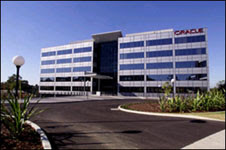I was doing some research recently into Web and Enterprise 2.0 initiatives and came across an interesting article written by David Galbraith on his blog concerning the 7 deadly sins of Web 2.0. In his article, David describes these as...
1. Obsession with rounded corners everywhere.
2. Pastel colors.
3. Linear blends.
4. Fonts bigger than 15 pixels.
5. Avoiding tables, when they are the best solution.
6. Stretchable text columns that are too wide to read comfortably.
7. Ajax use that makes things difficult to link to.
...which amused me somewhat as it focuses on the presentation aspects of Web2.0 rather than the fundamental underpinnings of this technology which is supposed to make information access easier for all. I thought about my area of expertise, information management, and started to jot down what I think the seven deadly sins of this area are (for modern information management systems anyway).
1. Thinking that Information Management is a one-way process. In today's society, collaboration and participation are relevant to information management. It is certainly a multi-way process and all efforts should be made to introduce this philosophy wherever possible.
2. Not implementing a truly-integrated solution. Most organisations have multiple solutions that partly address information management for the enterprise. A modern solution should be truly integrated - both internally and externally, meaning that within its own environment the varying aspects of functionality should seamlessly work together and outside, should enable information from various sources to be integrated (or federated) into a common, single-looking solution.
3. Ignoring security, privacy and intellectual property. With collaboration/participation comes the challenge of security - both from a perimeter and from an information-protection perspective. Again, these areas should be seamlessly integrated (or made available) from an information management solution.
4. Forgetting that you have end-users. Yes, end-users are crucial to any successful deployment as I've said a few times on this site. Addressing end-user requirements and involving these people within the project/deployment processes will ensure success when rolling-out the solution. Addressing a modern approach to information access (particularly Gen-Y) is the way forward - highlighted by Lindsay Tanner in his interview with the Australian IT today.
5. Focusing on navigation NOT search. We used to think that implementing an explorer-like interface for information management was the right thing to do. It isn't! End-users won't always know which folder information has been stored in or the metadata applied by the original author so search IS relevant for an information management solution. Automatically applying metadata and/or extracting relevant information from the content enables any user to find information quickly and efficiently.
6. Not addressing the paper-issue. 20 years ago managing paper (or physical information of any kind) was inexpensive. Today, it is costing a lot of organisations a lot of money on a daily basis. The cost of managing paper within a process can be huge and the risk-exposure unimaginable in a lot of cases. Get the physical information digitised as soon as it arrives in your organisation and use an electronic workflow to manage the process for review/approval etc. Store the paper temporarily (30 days or so) then rely upon an enterprise-class archival solution that addresses your compliance and retention/disposition requirements.
7. Not addressing your compliance requirements. Around the world, government and legal agencies are regularly introducing newer and stricter requirements for managing information within an organisation. The process for storage, migration, retention and disposition of information can be audited in a lot of environments and organisations can no longer rely upon ignorance after deleting vital detail from their information management solutions - and yes, I do include your email solution here as well!
Hope that helps...
Paul
The Oracle Australia and New Zealand Middleware and Technology Blog.
Wednesday, November 5, 2008
Subscribe to:
Post Comments (Atom)


3 comments:
Paul
Well thought through.
One other sin I think is worth a mention is - Not using existing user information to deliver subsequently better user experience.
Your thoughts?
Thanks for the comment - we welcome feedback from all our readers at any time.
Yes - if only the title of the article was the 'eight deadly sins...'
Users of existing system should always be engaged in any replacement/improvement project - their experience in the business-process is invaluable in getting a new solution right, be-it a new process engine or a new user-interface.
Paul
Paul - have you seen some of the recent stuff by Kevin Kelly? He's talking about next generation web as being the 'world wide database' - some really interesting ideas. The video of his recent talk is here
Post a Comment